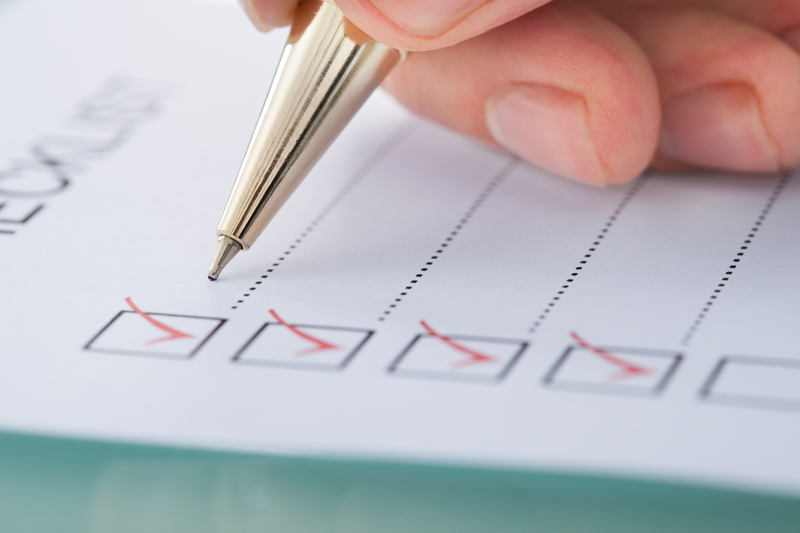The Connection Between Kinetic Energy and Muscle Activation in Lifting
Lifting weights is not just an exercise; it's a physics lesson in motion. At the core of efficient, powerful lifting lies a fascinating relationship between kinetic energy and muscle activation. Understanding how these elements interact can help lifters maximize strength, prevent injury, and accelerate progress.

What Is Kinetic Energy?
Kinetic energy is the energy of motion. In the context of exercise and lifting, it refers to the energy that an object (such as a dumbbell, barbell, or even your own body) possesses due to its movement. The classic formula for kinetic energy is:
- KE = 1/2 x mass x velocity?
In lifting, both the mass of the weight (or your body) and the speed at which you move it contribute to the total kinetic energy generated.
Key Characteristics of Kinetic Energy in Lifting
- Influences Power Output
- Enhances Movement Efficiency
- Affects Force Generation
- Critical for Explosive Movements
Muscle Activation: The Engine of Movement
Muscle activation is the process by which the nervous system recruits muscle fibers to produce force and movement. The greater the muscle activation, the more force you can generate.
Types of Muscle Activation
- Isometric Activation: Muscles generate force without changing length (e.g., holding a plank)
- Concentric Activation: Muscles shorten as they contract (e.g., lifting the barbell in a biceps curl)
- Eccentric Activation: Muscles lengthen under tension (e.g., lowering the barbell back down)
Both muscle activation and kinetic energy are fundamental in every weight lifting movement, but it's their interdependence that truly defines success in strength training.
How Kinetic Energy and Muscle Activation Interact
Understanding the dynamic between kinetic energy and muscle activation in lifting is crucial for maximizing training outcomes.
1. Initiating Movement: Overcoming Inertia
At the beginning of a lift, the mass is at rest. Here, muscle activation is at its peak because you must generate enough force to overcome inertia and move the weight. Once the weight moves, it accumulates kinetic energy.
- Deadlift: Your muscles fire explosively to get the bar off the ground.
- Bench Press: The initial press from your chest is where activation spikes.
2. Momentum and Efficiency
As the weight gains velocity, kinetic energy increases. Proper use of kinetic energy (momentum) can make lifting heavier weights more efficient. However, relying too much on kinetic energy can reduce muscle engagement, minimizing muscle-building stimulus.
- Olympic lifts (like the snatch and clean and jerk) use kinetic energy strategically for maximum force and power.
- Controlled reps in bodybuilding focus on minimizing momentum to maximize time under tension and muscle activation.
3. Eccentric Phase: Harnessing Kinetic Energy
During the lowering (eccentric) phase, the kinetic energy of the weight must be controlled. Here, muscles activate to resist gravity and dampen the motion, preventing injury and promoting muscle growth through greater mechanical tension.
- Slow negatives (slowly lowering the weight) are used to maximize eccentric muscle activation and stimulate hypertrophy.
4. Explosive Training: Maximizing Kinetic Energy and Muscle Output
Plyometric training and powerlifting are all about maximizing the relationship between kinetic energy and muscle activation. Fast, explosive movements recruit the most muscle fibers and produce higher power outputs by rapidly generating kinetic energy.
- Box jumps, sprints, and Olympic lifts facilitate maximal muscle recruitment and energy transfer.
The Science Behind Muscle Activation and Kinetic Energy
To gain a deeper understanding, let's explore the physiological and biomechanical aspects that govern the connection between kinetic energy and muscle recruitment in lifting.
Motor Units and Muscle Fiber Recruitment
A motor unit consists of a motor neuron and the muscle fibers it innervates. Heavy lifts and explosive actions activate more motor units, especially fast-twitch fibers, which are critical for both maximal strength and velocity. These fast-twitch fibers are responsible for quickly generating force, vital for producing kinetic energy in movements like the clean and jerk or sprinting.
Neuromuscular Coordination
Effective muscle activation also depends on neuromuscular coordination--how well your brain communicates with your muscles. Skilled lifters excel at rapidly synchronizing motor units to produce high levels of force and, correspondingly, higher kinetic energy.
Force-Velocity Curve
The force-velocity curve represents how muscle force production changes with the speed of contraction. At high velocities (i.e., in explosive lifts), force decreases but kinetic energy increases due to the greater velocity component. Optimal training should balance both force (muscle activation) and velocity (contributing to kinetic energy) for best results.
Stretch-Shortening Cycle (SSC)
Many powerful movements utilize the stretch-shortening cycle. Here, muscles briefly stretch (eccentric contraction) before rapidly shortening (concentric contraction), storing and releasing elastic energy. This stored energy translates into increased kinetic energy and greater muscle activation, enhancing lifting performance.
Practical Applications in Lifting
Understanding the relationship between kinetic energy and muscle activation isn't just an academic exercise--it has real-world implications.
Optimizing Exercise Technique
- Control the eccentric phase: Slowing down the lowering part of a lift maximizes muscle activation and increases time under tension, leading to better muscle development.
- Minimize unnecessary momentum: Swinging weights uses kinetic energy but may reduce muscle engagement and increase injury risk.
- Explosive lifts: When power and speed are the goal, using momentum properly can recruit more muscle fibers and enhance athletic performance.
Programming for Strength and Size
By adjusting lifting tempo and technique, you can emphasize either muscle activation or kinetic energy to meet your goals:
- Strength and Power: Incorporate Olympic lifts, jumps, and sprints to train muscle activation at high velocities, maximizing kinetic energy output.
- Muscle Growth: Focus on slow, controlled reps (especially the eccentric phase) to stress the muscles and promote growth through sustained muscle activation.
Injury Prevention
Proper alignment of muscle activation and kinetic energy helps prevent injuries. A lack of control during explosive or loaded movements (where kinetic energy is high) can overload joints and connective tissue.
- Use progressive overload to increase intensity gradually.
- Prioritize technique over excessive weight or speed.
- Incorporate mobility and stability exercises to support joint health.
Common Lifting Mistakes Related to Kinetic Energy and Muscle Activation
- Using too much momentum: Swinging a weight recruits less muscle, shifting load from the muscles to connective tissues, increasing injury risk.
- Neglecting eccentric control: Dropping weights instead of lowering them slowly wastes an opportunity for greater muscle activation and growth.
- Incorrect technique: Poor form leads to inefficient force transfer, reducing both kinetic energy and muscle engagement.
- Training too fast or too slow: Neglecting both ends of the force-velocity spectrum limits athletic development.
Best Practices to Harness the Power of Both Kinetic Energy and Muscle Activation
- Incorporate both controlled (hypertrophy) and explosive (power) movements in your workout.
- Maintain perfect form: Quality movement maximizes force and energy transfer.
- Progressively overload: Increase resistance or velocity over time to continue challenging your neuromuscular system.
- Include plyometrics and Olympic lifts: For sport-specific kinetic energy and muscle recruitment.
- Use full range of motion: Maximize fiber recruitment and energy transfer for overall strength and muscle development.
Case Studies: Examples of Kinetic Energy and Muscle Activation in Popular Lifts
1. Barbell Squat
- Muscle activation: Initiates the upward movement from the bottom of the squat (concentric phase).
- Kinetic energy: As you move quickly and powerfully, kinetic energy kicks in, making it easier to pass the sticking point.
- Control: Slowing the eccentric phase taxes the muscles, building stability and muscle size.
2. Deadlift
- Muscle activation: Maximal at the start to break inertia and lift the weight off the ground.
- Kinetic energy: Increases as the bar accelerates upwards mid-lift.
- Finishing: Tight muscle control at lockout ensures proper energy transfer and minimizes risk of injury.
3. Power Clean
- Muscle activation: High throughout, especially at the triple extension phase (hips, knees, ankles).
- Kinetic energy: Massive increase as you explosively pull and "catch" the bar at your shoulders.
- Coordination: Seamless transfer from muscle power to kinetic energy produces efficient, powerful lifts.

Frequently Asked Questions
Q: Should I focus more on explosive lifts or slow controlled reps?
A balanced program includes both. Slow, controlled reps maximize muscle activation and hypertrophy. Explosive lifts increase kinetic energy utilization and enhance athleticism.
Q: Can you build muscle using momentum?
Relying too much on momentum (kinetic energy) reduces muscle activation. Focus on controlled movements for muscle growth, but include some explosive work for power and nervous system adaptation.
Q: How do powerlifters and Olympic lifters differ in their use of kinetic energy?
- Powerlifters rely more on high muscle activation and maximal force production, especially during slow, controlled lifts (bench press, squat, deadlift).
- Olympic lifters optimize both explosive muscle recruitment and kinetic energy for complex, fast-paced movements (snatch, clean and jerk).
Summary: Why the Link Between Kinetic Energy and Muscle Activation Matters
Understanding the connection between kinetic energy and muscle activation in lifting helps you train smarter and safer. Mastering both principles leads to more effective workouts, faster progress, and a balanced development of strength, size, and athleticism.
- Maximize your lifts by harnessing both muscle force and efficient movement.
- Prevent injuries by appropriately blending controlled and explosive exercises.
- Elevate your performance by applying the science of motion and muscle to every workout.
As you progress in your lifting journey, continue to experiment with tempo, technique, and intensity. This blend of biomechanics and muscle physiology is the key to unlocking your true strength and reaching your lifting goals.



